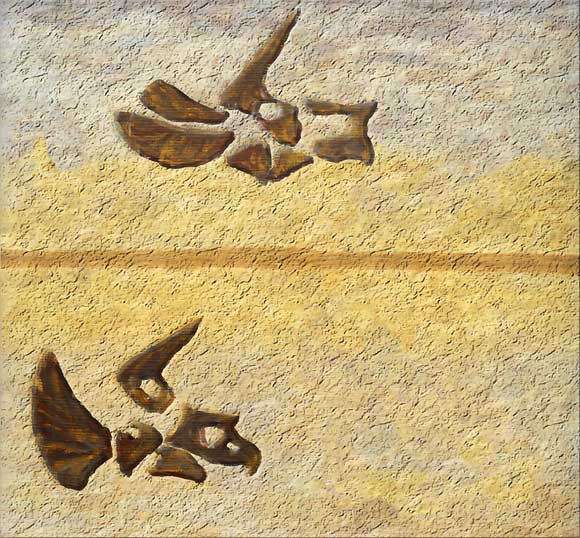A new study led by paleontologist John Scannella of Montana State University provides a detailed look at shifts in the morphology of Triceratops – a genus of giant horned dinosaurs in the family Ceratopsidae – over a period of about two million years at the end of the Cretaceous.

Triceratops models at JuraPark in Solec Kujawski, Poland. Image credit: CLI / CC BY-SA 3.0.
Mr Scannella and his colleagues recorded the stratigraphic information for more than 50 Triceratops skulls recovered from the Hell Creek Formation in Montana and analyzed their morphology.
“Most dinosaurs are only known from one or a handful of specimens. Some dinosaurs are known from a large number of specimens, but they’re often found all in one place – on a single stratigraphic horizon. The great thing about Triceratops is that there are a lot of them, and they were found at different levels of the Hell Creek Formation,” explained Mr Scannella, who is the first author of a paper published in the Proceedings of the National Academy of Sciences.
“So we can compare Triceratops found at different levels. When you have a larger sample size, you can learn much more about variation, growth and evolution.”
Paleontologists previously discovered that the skull and horns of Triceratops changed shape as it grew from a baby to an adult. In 2010, Mr Scannella with colleagues suggested that the skull of Triceratops underwent an even more dramatic transformation than had been suspected and that when fully mature, the Triceratops became what had previously been thought to be a distinct genus of horned dinosaur, the Torosaurus.
“The new study finds evidence that not only did Triceratops change shape over the lifetime of an individual, but that the genus transformed over the course of the end of the age of dinosaurs,” Mr Scannella said.

This image shows the evolution of Triceratops in the Hell Creek Formation, Montana. Image credit: Holly Woodward.
Over two million years at the end of the Cretaceous period, Triceratops went from having a small nasal horn and long beak to having a long nasal horn and shorter beak.
The dinosaur with a small nasal horn and long beak is a Triceratops horridus. It was only found lower in the Hell Creek Formation.
The dinosaur with a long nasal horn and shorter beak is a Triceratops prorsus. It was only found near the top of the formation.
Skulls found in the middle of the formation showed characteristics of both Triceratops horridus and Triceratops prorsus.
The paleontologists also found that Triceratops is the most common dinosaur in the Hell Creek Formation.
______
John B. Scannella et al. Evolutionary trends in Triceratops from the Hell Creek Formation, Montana. PNAS, published online June 30, 2014; doi: 10.1073/pnas.1313334111







